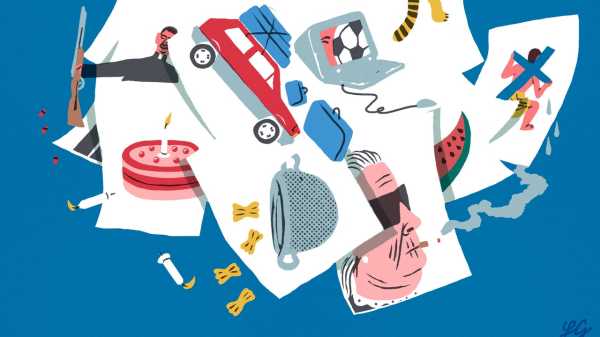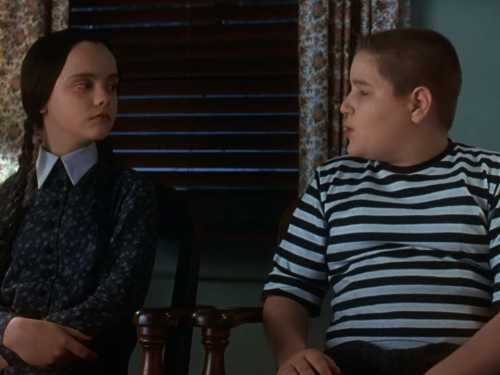
Italy is, in part, a photographic invention, a mirage of tourist snaps and magazine spreads of decadent Venetian palazzi, sauvage Sardinian beaches, and almost pornographic closeups of creamy Roman carbonara. “Pictures from Italian Profiles,” a project born on Facebook and recently published as a book with the same title, shows us something different: what its creator, Stefano Frosini, refers to as “a marginal Italy,” moving beyond “the glossy rhetoric of the Belpaese that ends up cannibalizing all other possible narratives.”
As its title suggests, the project gathers images from the social-media profiles of Italians and, as the page’s following has grown, images submitted from photo albums and personal collections. The photos are selected by Frosini, a twenty-nine-year-old teacher from Pistoia, in Tuscany, for their strangeness or improbable beauty, for their absurdity or grotesqueness. These are photographs without pretensions, even “made in error or with no particular ambition,” Frosini told Emiliano Ceresi in an interview. He chose an English name for the group to avoid the impression that he was somehow guided by smug patriotism, and these pictures do more to satirize and complicate any national myths than to reinforce them.
Some are obviously Italian self-mockery, like the tableau of the policeman taking a moment away from his official duties (or perhaps eminently fulfilling them) to lift up caution tape so that a woman and her child can carry home some pizzas, a rare shot that Frosini says was taken by a professional journalist—or the various pictures of babies with cigarettes in their hands (in one case, on the lap of a priest). Some are baffling, like an unforgettable picture of a man in a Spider-Man T-shirt, staring with feigned astonishment at the camera, next to a bed on which sit dozens of eggs. But many are Italian in a way that only grows more meaningful, and more nuanced, as you spend time in the untouristed places where most people actually live, and experience for yourself the christenings and funerals, the smell of the pine trees by the seaside, the eerie emptiness of the big cities on the Ferragosto holiday in mid-August, and everywhere the weight of the past. The pictures exhibit the earthiness of proverbs rather than the shiny facility of stereotypes.
Frosini’s eye gravitates toward the kinds of pictures that his parents and grandparents used to look at in the lazy hours after a holiday meal. His page collects the stuff of family albums, anonymous yet vivid pictures of “school trips, New Year’s Eve parties, Easter Mondays, last-minute birthday parties, small town festivals,” the occasions at which, Frosini writes, “the person who takes pictures does so sincerely, renouncing the techniques of aesthetic sublimation that flatten his or her taste to a single norm, seen elsewhere and consciously reproduced.” Although Frosini’s project was made possible by social media, it is not quite of it.
Rather, “Pictures” revels in the kind of uninhibited sharing that took place in the early days of posting photos online, before every image became an act of self-fashioning. The pictures are marked by the carelessness of the disposable camera and, Frosini has said, an earlier era of digital photography, when it was easy and cheap to take hundreds of pictures, but before the scripts, postures, and carefully considered iconography of social media had solidified. Though all the photographs are anonymous, Frosini was drawn to the photography of digital non-natives, those people we all know who tend to overshare both online and in person, and who, in Italy, often flavor their language with dialect as they recount the forgotten story of some roguish uncle or a now entirely unfunny joke or an obscure local feud whose causes you just can't get straight.
There’s nostalgia in this approach, but also more than a dash of mockery: at first, Frosini would visit the comments section of online newspapers, find “the most extreme and caps-locked” comment, and look through the Facebook profile of the person who made it, “because language is always a good place to start,” he told Ceresi. (Frosini himself writes in a markedly careful, correct, and occasionally bookish Italian.) Though he rethought his methods when the group became popular, above all to insure the privacy of those portrayed, “Pictures” is not without its ugly moments, particularly in its portrayal of the elderly; sometimes, the total artlessness of a picture makes it seem as if we’re merely being invited to make fun of both the photographed and the photographer. But, at its best moments, “Pictures” is marked by the wit, the gentle pathos, and the stranger-than-fiction unexpectedness of Diane Arbus.
Although the chronology of the book is wide, extending from the black-and-white era through the grainy early days of digital to the twenty-two-megapixel present, most of the pictures date from the nineteen-nineties and early two-thousands, when Frosini was a little kid. (He was born in 1993.) Frosini might as well be the boy chowing down on some pasta in his messy bedroom while “Futurama” plays on TV, beneath a poster of the Azzurri, Italy’s national soccer team, with a box of ACE juice on the windowsill and a little Charizard decal on the side of his desk. Photos like these are “all abysses of our country’s collective nostalgia, objective correlatives of entire phases of youth,” Frosini has explained. He’s said that, at the beginning, he’d include a picture just because of “the marked resemblance of an unknown person with someone I knew,” and it could easily be one of his friends who, responding to a dare or just egged up on youth itself, flies from a swing past the crooked arm of a gnarled old tree, off into the future.
A recurring preoccupation is the contrast of old age and youth—the defining social dynamic in Italy, where there are two elderly people for every child. In one unforgettable image, which sits near the center of Frosini’s printed collection, an elderly woman holds a PlayStation 2 version of Final Fantasy X on the table with both hands, a bemused expression on her face. In the background, a young girl—presumably her granddaughter—smiles and gives two thumbs up. In the hazy, washed-out Polaroid image, whose very coloration evokes a lost world, the old woman stares out from what feels like the deep past. She may well have no idea what she’s holding or why it’s important. The image is amusing in the way that the foibles of the elderly can be. But, at the same time, it’s ominous. In a country increasingly under the burden of its elderly, and where the eighty-five-year-old Silvio Berlusconi is vying for yet another term in national office, nostalgia can be mixed with fear, anger, frustration, and disgust.
The nonni of these pictures are sometimes charming but just as often grotesque; they often sit uneasily with the youth around them, and with the presumably youthful viewer. The bare-chested, white-haired man eating Bolognese for lunch doesn’t look like he’s saying anything particularly nice; the white tiles on the wall and floor, and the white door behind him, only bring out his red-flushed face and sunburned chest. In another photo, a slightly confused-looking old man, wearing his trilby indoors, sits and holds a handwritten note reading “non devi morire”—“you don’t have to die.” Frosini generally does not comment on the images he posts, and here this image, though perhaps funny at first glance, quickly slides into an uncomfortable ambiguity.
“Pictures from Italian Profiles” reveals the underbelly of the belpaese, or “beautiful country,” the ugliness and exhaustion that salts its charms. In one picture, framed wedding photos lean against an overflowing dumpster. In another, a cheap bottle of tomato passata turns into a weapon, shattering a windshield. Where is he headed, the young man who, in a hazy shot, holds a burning newspaper in a train car? Was the news really that bad?
Perhaps the most telling image is a tight closeup through the mouth of a trash can, where a newspaper is partially visible beneath a moraine of cigarette butts and a crushed can of sugar-free Red Bull. On the front page, a photo shows a member of the Italian national soccer team splayed out on the pitch, framed by an opponent’s red shinguards. The headline is obscured except for “Italia . . . sogno finisce”—“Italy . . . the dream ends.” The image recalls a picture by Guido Guidi, from the landmark 1984 photo book “Viaggio in Italia”—a book that, though explicitly focussed on landscape, has much in common with Walker Evans’s “American Photographs”—of a dilapidated building, little more than a shed, optimistically, or ironically, labelled the Villa of Dreams. Like the photographers whose work is gathered in “Viaggio in Italia,” Frosini is attracted to the place where the fantasy of Italy meets the lived reality, but not so much as presented by art photographers, as seen, or revealed by Italians themselves.
This is not some “unknown” or “secret” Italy but, rather, the Italy you couldn’t really visit even if you wanted to. It is the Italy of the villages whose schools are closing because of low birth rates, whose tired countryside is cracked and dry or blanketed by gray smog. It is often a poor Italy, a desperate Italy, an Italy that smells like cigarette smoke and old frying oil. “Every once in a while I try to get lost on Google Maps, zooming in on Italy and randomly choosing some little lost town,” Frosini told Ceresi in an interview. “Then I search on Facebook for pages dedicated to that place, to its fairs, to its businesses, all the way to its tourist association and the town’s official page. Sometimes I look for a long time, lost in fruitless wanderings; other times, treasures of unlikely value and beauty emerge.” As a trip through Italy’s digital hinterland, through the sights and scenes of the country’s domestic imaginary, its visual subconscious, “Pictures” presents a kind of online answer to “Viaggio in Italia,” the frayed end of a long tradition that, looking even further back, has its roots in the prints and photographs of Italian scenes that travellers brought back from the Grand Tour. But, rather than mythologizing Italy, “Pictures” often ironically, sometimes earnestly, does the opposite: in their honesty, and their anonymity, these photographs show too much. ♦
Sourse: newyorker.com






